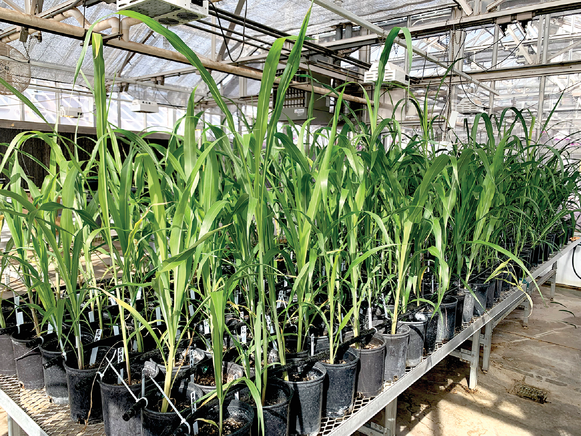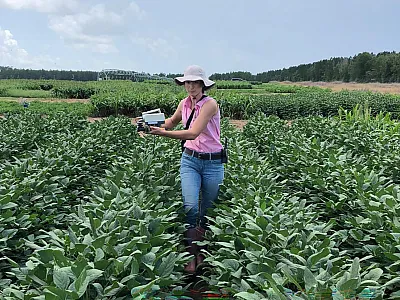Testing Nitrate Accumulation in Forage Sorghum

Sorghum is increasingly grown as a forage crop in semi‐arid regions due to its drought tolerance. However, its foliage can accumulate nitrate at levels toxic to livestock when under drought stress or grown under high‐nitrate conditions, resulting in the forage being discarded. Selecting lines with lower nitrate accumulation could address this problem, but little is known regarding the nitrate accumulation capacity of modern sorghum inbred lines.
Researchers grew a set of sorghum male sterile inbred A‐lines, used as seed parents in forage hybrids, in a greenhouse under high‐nitrate conditions. They sampled stem and leaf tissues and measured their nitrate concentrations. The researchers found the nitrate concentration of stem tissue was above a potential toxicity threshold among all lines while that of most lines’ leaf tissue was lower than the threshold. Reliability estimates for leaf and stem tissue indicated greater genetic variance and feasibility for selection of nitrate accumulation capacity within leaf tissue, a benefit as leaves are typically preferred by livestock in hay‐based production systems.
The study shows sorghum breeders should be able to develop inbred lines with leaf nitrate accumulation capacity below a potential toxicity threshold, reducing economic losses caused by discarding toxic hay.
Adapted from Ralston, S. R., Rooney, W.L., & Boerman, N. A. (2023). Estimating reliability for evaluating nitrate accumulation in sorghum (Sorghum bicolor L. Moench) inbred A‐lines. Agrosystems, Geosciences & Environment, 6, e20403. https://doi.org/10.1002/agg2.20403
Text © . The authors. CC BY-NC-ND 4.0. Except where otherwise noted, images are subject to copyright. Any reuse without express permission from the copyright owner is prohibited.











